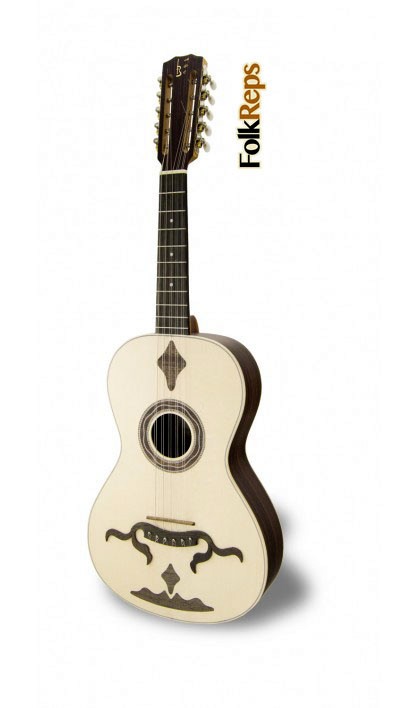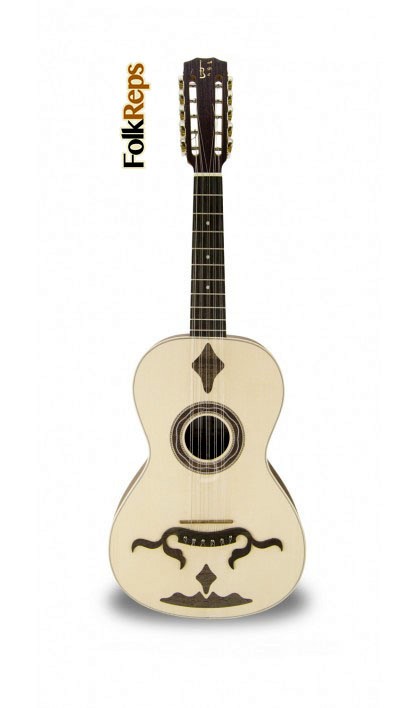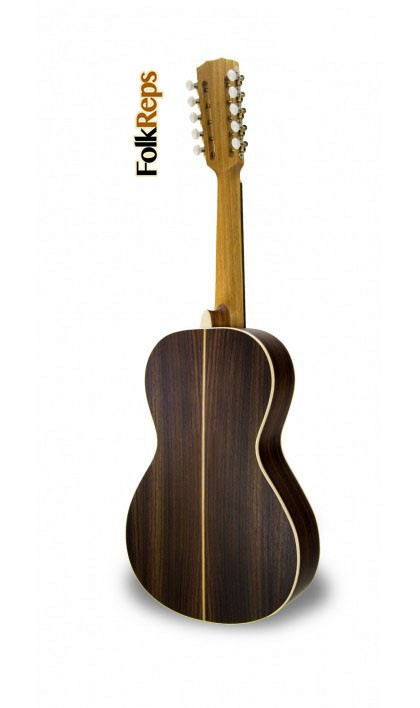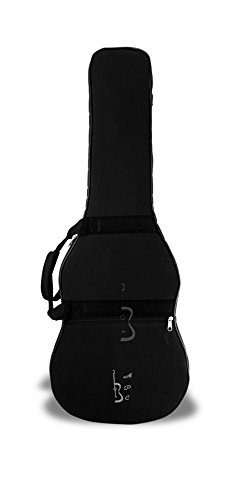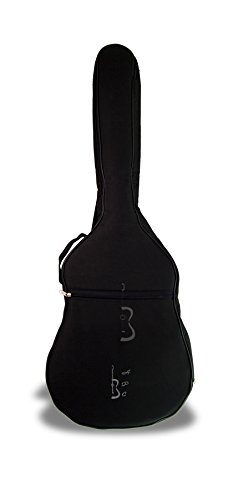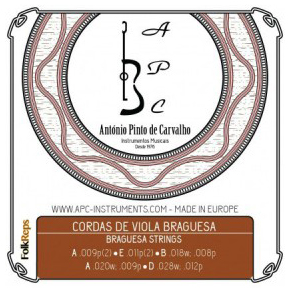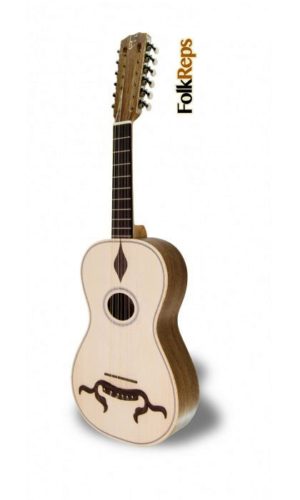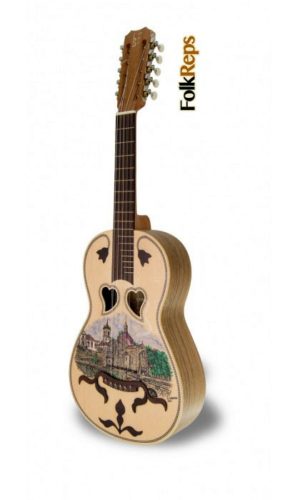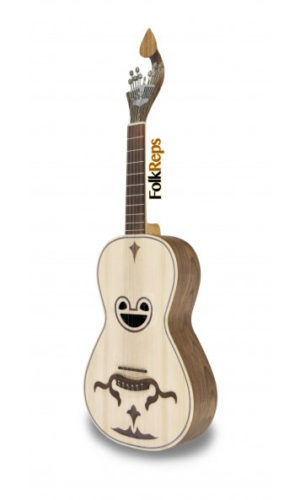Description
There are five types of popular guitar in mainland Portugal – each one corresponding to a number of geographical areas – from which two types are absolutely in force, the another is completely in disuse and the last two groups are becoming extinct: the braguesa guitar, the amarantina guitar (or of two hearts), the toeira guitar (or Coimbra’s guitar), the beiroa guitar (or “bandurra”) and the campaniça (Alentejo’s guitar).
Its five string double orders are in metal. The braguesa’s tune changes according to the regions and to the different music styles. Consequently, the pitches values are not absolutely constant, so that it can be changed in order to accompany other instrument’s tunes in ensembles or some authors specific directions. Manuel da Paixão Ribeiro, for instance, refers to the tune – from higher to lower pitches – E- B – G – D – A also characteristic of the Coimbra’s toeira guitar and of the XVIth-XVIIth centuries spanish guitar.
Michel Angelo Lambertini mentions the tune A – E – B – A – D. Present players follow the scheme D – A – B – E – A, supressing the sixth string and choosing the “requinta” D – G – B – F# – A. As accompaniment to the cavaquinho, the braguesa guitar follows its tune by the so called “moda velha” and when played solo, it has a specific pattern.
Being the most important and characteristic string instrument of northwestern Portugal’s “rusgas”, “chulas” and “desafios”, the braguesa guitar is traditionally performed alone – solo and as accompaniment to singing repertory – or, frequently, side by side with the cavaquinho, “violão”, “mandolin” and “rabeca”.

